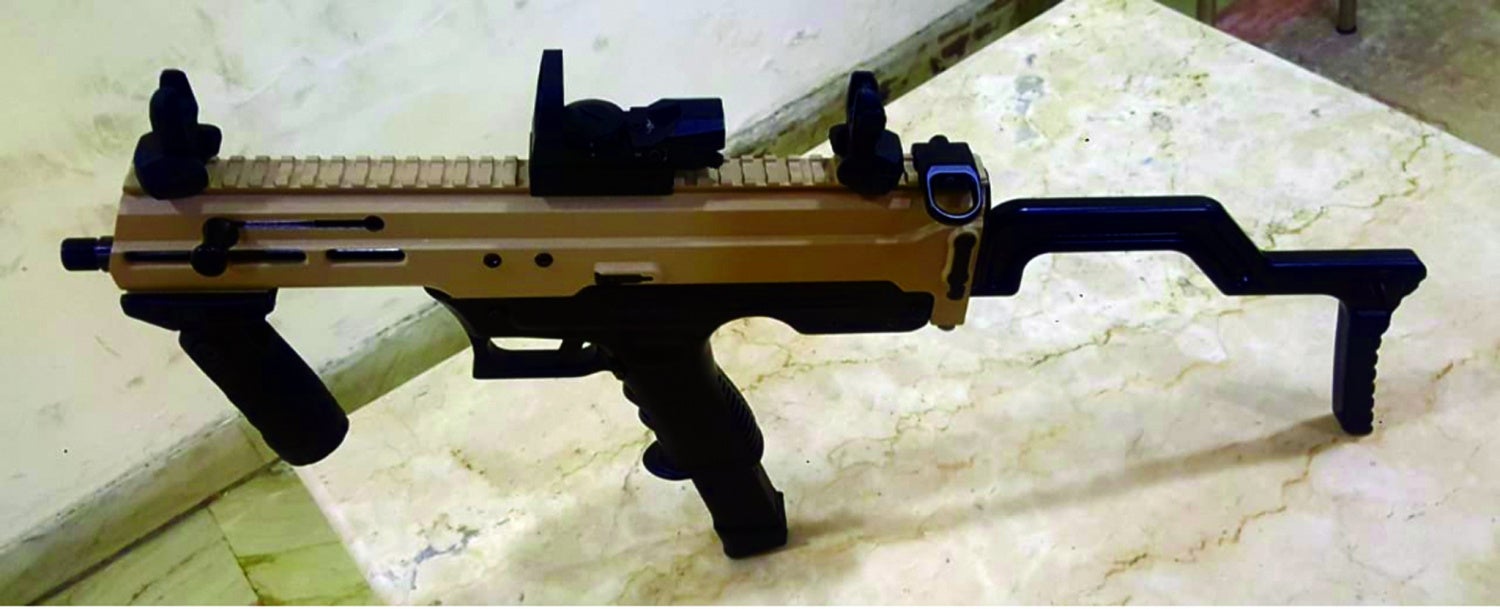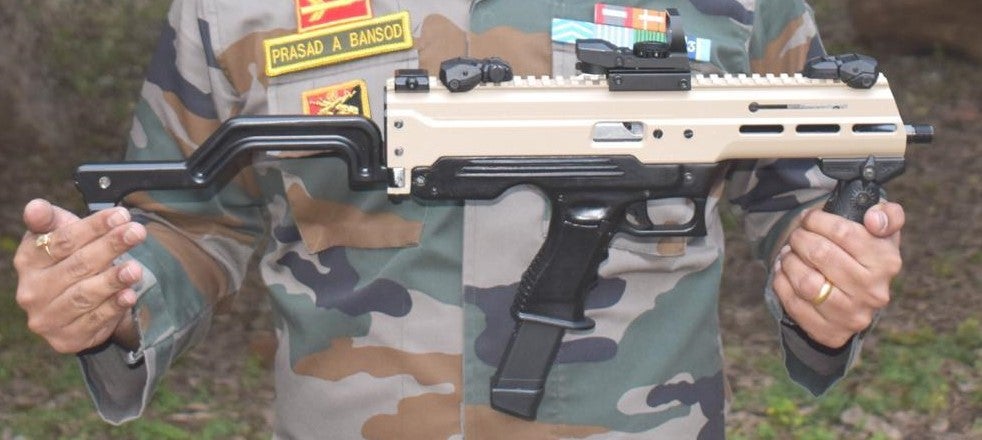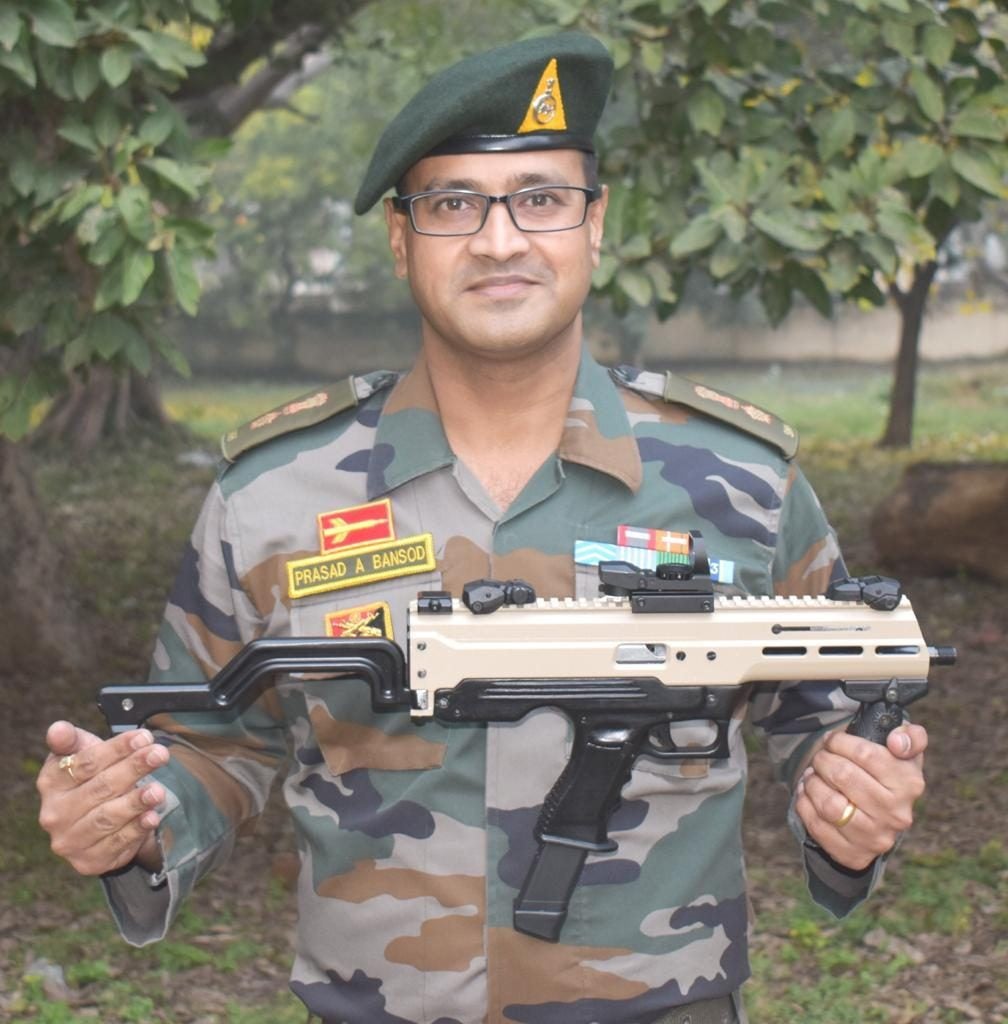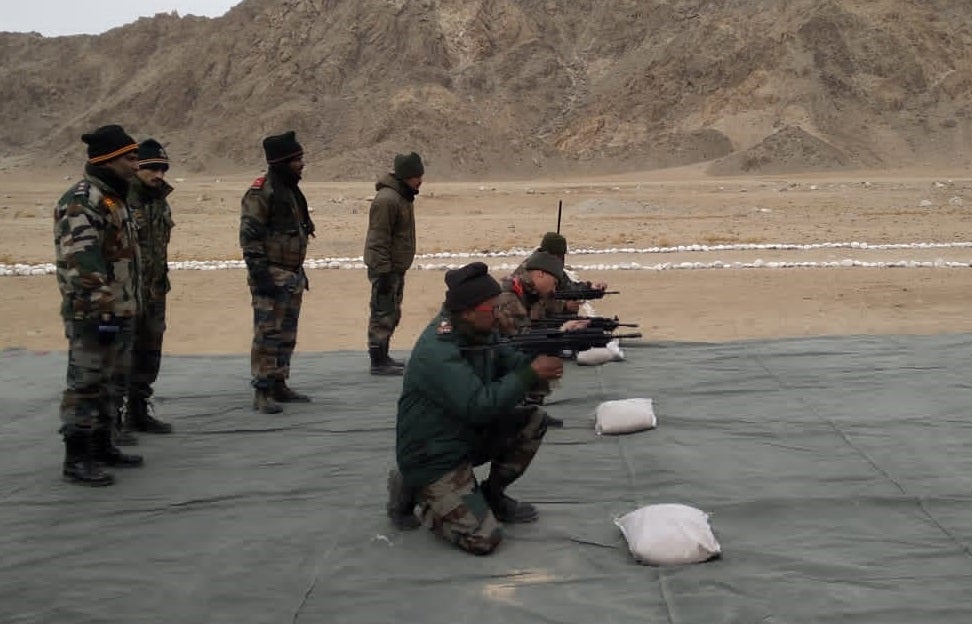India Introduces New Indigenous ASMI Submachine Gun
India has introduced a new 9x19mm submachine gun – the ASMI. Indigenously designed the new weapon uses modern materials and manufacturing techniques and it even takes Glock magazines, feeding from the extended 33 round magazines. It is claimed that the weapon will cost around 50,000 Indian Rupees or $685 to manufacture.
The new submachine gun is still in the early prototype phase and was displayed at the Indian Army’s recent innovation event. The ASMI was designed by Lt. Col. Prasad Bansod of the Indian Army’s Infantry School, Mhow in collaboration with Armament Research and Development Establishment, which is part of India’s Defence Research and Development Organisation (DRDO).
It appears the Lt. Col. Bansod developed his weapon using feedback from soldiers and represents a step-change for the Indian Army with the user’s needs defining the requirements and makeup of the weapon. According to India Today Lt. Col. Bansod has previously reverse engineered an INSAS into a bullpup configuration.

According to a press release from DRDO, the submachine gun was developed in an impressive 4 months using 3D printing prototyping techniques. Two prototypes were displayed at the Indian Army event. The ASMI reportedly uses a standard blowback action and has a quite controllable 600rpm rate of fire. Both the prototypes displayed have machined aluminium upper receivers and carbon fiber lowers. The upper has a full-length 12 o’clock Picatinny rail with more rail space at 6 o’clock. There are MLOK slots at 3 and 9 o’clock and the ASMI has a side folding stock.
The weapon has an Uzi-like configuration with the extended Glock magazine being inserted into the pistol grip. The controls include a charging handle which can be swapped from left to right by the user. The safety comprises of a push-through button which moves from safe to semi to full auto. This does not appear to be ambidextrous at this stage of development. It is also unclear if the magazine release can be switched.

The prototypes are fitted with folding BUIS and a small red dot. The muzzle of the prototype also appears to be threaded for a suppressor. The ASMI is said to weigh between 1.7-2kg or 3.7-4.4 lbs empty and has an 8-inch barrel and the side folding stock folds to the right. There are a number of takedown pins visible and the latest prototype has a light flat dark earth finish. The lower has clearly been modelled after the Glock as it also includes the Glock’s thumb shelf.
Here’s a video of India Today’s report on the new submachine gun which gives us a better idea of its controls and size:
The ASMI is only in the prototype stages and it may be some time before we see it pass Indian Army testing if the delay to the 5.56×30mm-chambered Joint Venture Protective Carbine (JVPC) are anything to go by. We may see further refinement of the design with a move toward a polymer rather than carbon fiber lower. It is fascinating to hear that ARDE has been using additive manufacturing, specifically using metal 3D printing to create trigger mechanism components.
The JVCP, also developed by ARDE, had been in development for a number of years and had been tested by a number of India’s paramilitary police forces but only passed Indian Army evaluations in early December 2020. The JVPC is manufactured at the Ordnance Factory Board’s Kanpur Small Arms Factory. It has not yet been formally adopted by the India military.
Below is the DRDO’s full statement on the ASMI:
“India’s first indigenous 9mm Machine Pistol has been jointly developed by DRDO and Indian Army. Infantry School, Mhow and DRDO’s Armament Research & Development Establishment (ARDE), Pune have designed and developed this weapon using their respective expertise in the complementary areas. The weapon has been developed in a record time of four months. The Machine Pistol fires the in-service 9mm ammunition and sports an upper receiver made from aircraft grade Aluminium and lower receiver from carbon fibre. 3D Printing process has been used in designing and prototyping of various parts including trigger components made by metal 3D printing.
The weapon has huge potential in Armed forces as personal weapon for heavy weapon detachments, commanders, tank and aircraft crews, drivers/dispatch riders, radio/radar operators, Closed Quarter Battle, counter insurgency and counter terrorism operations etc. This is also likely to find huge employability with the central and state police organizations as well as VIP protection duties and Policing. The Machine Pistol is likely to have production cost under rupees 50000 each and has potential for exports.
The weapon is aptly named “Asmi” meaning “Pride”, “Self-Respect” & “Hard Work”.
Keeping the Hon’ble Prime Minister’s vision of Aatmnirbhar Bharat in view, this small step will pave way for self reliance and it is expected that the Services and Paramilitary Forces (PMFs) will induct this expeditiously.”
The ASMI is intended to replace the venerable 1A Carbine, India’s copy of the British Sterling Submachine Gun, which has been in service since the 1960s. The 1A remains in service with some of India’s paramilitary and police forces. Within the Indian Army, it is hoped the weapon might become the personal weapon of rear echelon troops who don’t require or can’t carry a service rifle. This niche, however, also overlaps with the 5.56×30 mm JVPC – the ASMI has the advantage of being chambered in a cartridge which is already in service.
In terms of frontline submachine gun use the Indian Army’s specialist Ghatak Platoons and Para (Special Forces) are equipped with the B&T MP9. It remains to be seen if the ASMI might augment or replace these in the future. The new prototype submachine gun, however, looks to be a tidy, well thought out design which incorporates modern features and production techniques.


